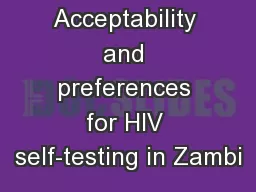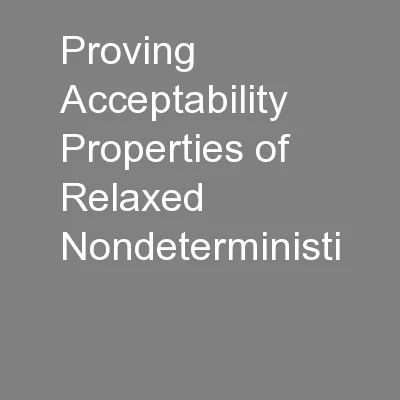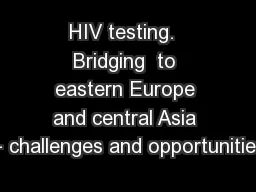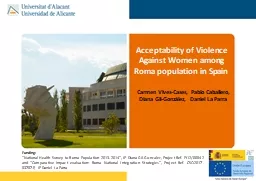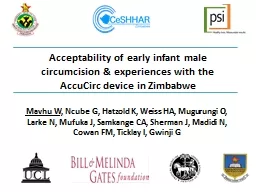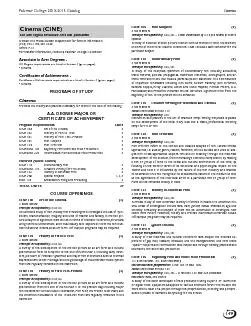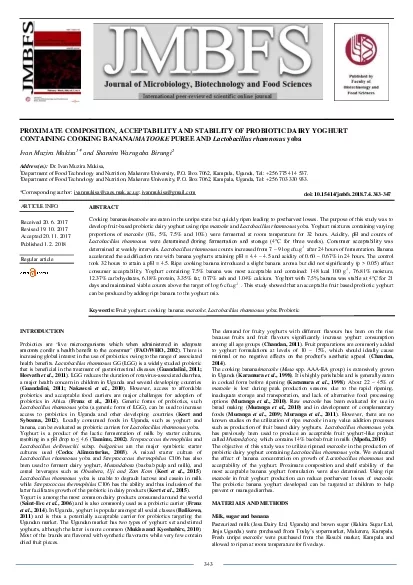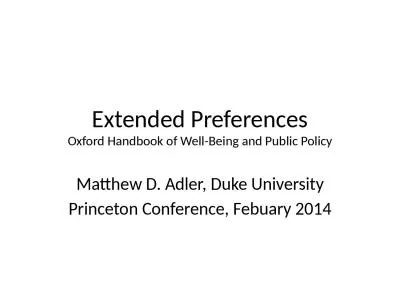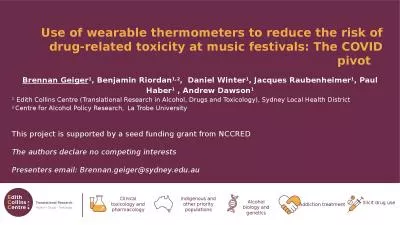PPT-Acceptability and preferences for HIV self-testing in Zambi
Author : marina-yarberry | Published Date : 2017-05-11
a populationbased formative study using a discrete choice experiment Arianna Zanolini American Institutes for Research and Centre for Infectious Disease Research
Presentation Embed Code
Download Presentation
Download Presentation The PPT/PDF document "Acceptability and preferences for HIV se..." is the property of its rightful owner. Permission is granted to download and print the materials on this website for personal, non-commercial use only, and to display it on your personal computer provided you do not modify the materials and that you retain all copyright notices contained in the materials. By downloading content from our website, you accept the terms of this agreement.
Acceptability and preferences for HIV self-testing in Zambi: Transcript
Download Rules Of Document
"Acceptability and preferences for HIV self-testing in Zambi"The content belongs to its owner. You may download and print it for personal use, without modification, and keep all copyright notices. By downloading, you agree to these terms.
Related Documents

